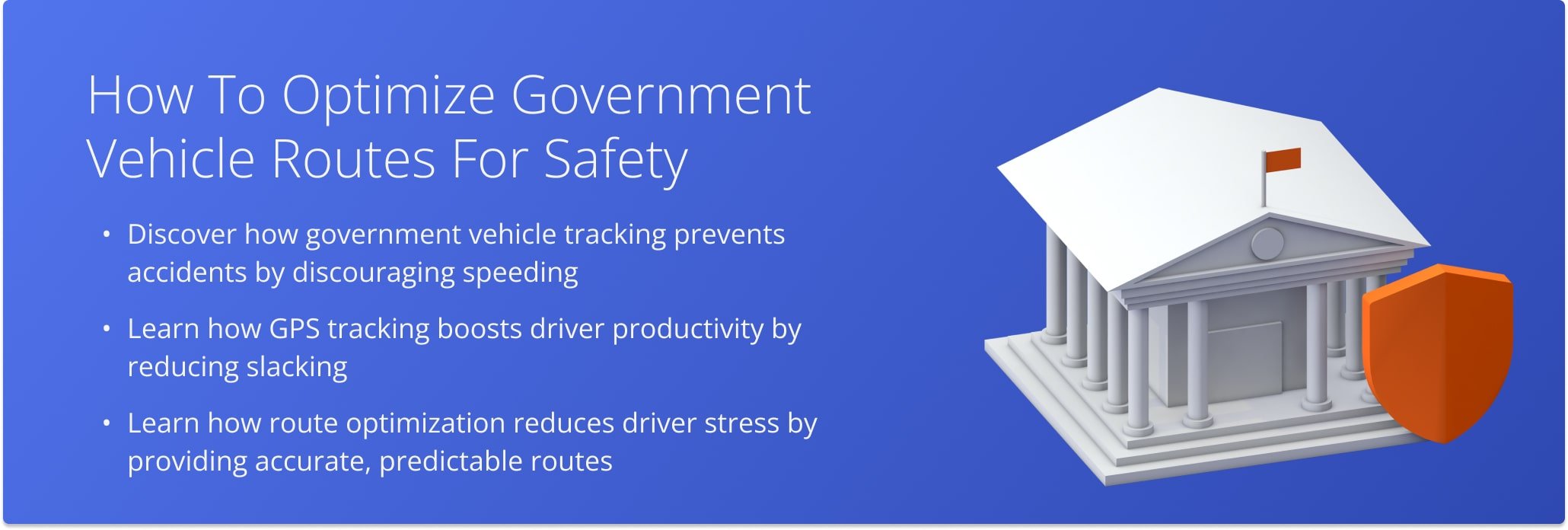How To Optimize Government Vehicle Routes For Safety
Every year, thousands of lives are lost in road crashes caused by reckless or rushed driving. For government and public safety fleets, preventing these accidents is a top priority. Route optimization software helps drivers follow safe, efficient schedules without feeling pressured to speed or break laws. Combined with GPS tracking, dispatchers gain real-time visibility to ensure compliance, accountability, and safer roadways.
Ensuring Safer, More Efficient Routes For Government Fleets
Route optimization software helps government fleet drivers stay on schedule without feeling rushed. By providing accurate, efficient routes and predictable arrival times that adapt to changing conditions, drivers are less likely to break traffic laws or take unsafe shortcuts.
But what about dispatchers? How can they ensure drivers are actually following safe driving practices?
GPS tracking provides the answer. With government vehicle GPS tracking, dispatchers can monitor drivers in real-time, seeing both location and speed. All violations, including speeding or unsafe maneuvers, are logged automatically, giving dispatchers the data needed to ensure compliance and accountability.
Using government vehicle tracking and a public transport route planner reduces accidents, encourages defensive driving, and helps drivers stay productive while following safe, optimized routes. This approach is especially valuable for school bus fleets, emergency vehicles, and other public safety operations.
Key Benefits of Optimized Government Vehicle Routes
- Provides accurate, efficient routes that reduce driver stress and unsafe behavior
- Real-time GPS tracking ensures compliance, accountability, and safety
- Reduces accidents and promotes defensive driving for public safety fleets
- Helps dispatchers monitor speed, location, and route adherence
- Boosts overall productivity while maintaining safe driving practices
Use Cases Of Government Fleet Management
Government fleet management applies to a wide range of public safety and service operations:
- School Bus Fleets: Ensure safe, efficient routes that reduce speeding risks and keep students on schedule.
- Emergency Response Vehicles: Optimize routing for ambulances, fire trucks, and police cars while tracking compliance in real time.
- Municipal Service Fleets: Support garbage collection, street maintenance, and other city services with efficient, accountable routing.
- Public Transportation Systems: Monitor buses or shuttles for route adherence, driver safety, and reliable service delivery.
By using government fleet management across these scenarios, agencies reduce accidents, improve accountability, and deliver safer, more reliable services to the public.
Last Updated:
